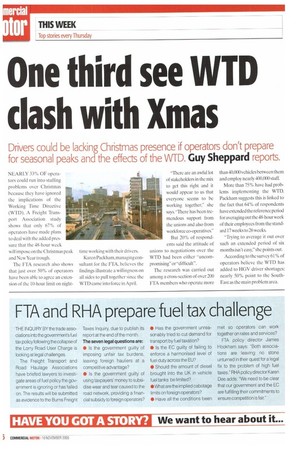One third see WTD clash with Xmas
Page 6

If you've noticed an error in this article please click here to report it so we can fix it.
Drivers could be lacking Christmas presence if operators don't prepare for seasonal peaks and the effects of the WTD. Guy Sheppard reports.
NEARLY 33% OF operators could run into staffing problems over Christmas because they have ignored the implications of the Working Time Directive (WTD). A Freight Transport Association study shows that only 67% of operators have made plans to deal with the added pressure that the 48-hour week will impose on the Christmas peak and New Year trough.
The FTA research also shows that just over 50% of operators have been able to agree an extension of the 10-hour limit on night time working with their drivers.
Karen Packham, managing consultant for the FTA, believes the findings illustrate a willingness on all sides to pull together since the WTD came into force in April. "There are an awful lot of stakeholders in the mix to get this right and it would appear to us that everyone seems to be working together," she says. "There has been tremendous support from the unions and also from workforce co-operatives."
But 20% of respondents said the attitude of unions to negotiations over the WTD had been either -uncompromising" or"difficult".
The research was carried out among a cross-section of over 200 FTA members who operate more than 40,000 vehicles between them and employ nearly 400,000 staff.
More than 75% have had problems implementing the WTD. Packham suggests this is linked to the fact that 64% of respondents have extended the reference period for averaging out the 48-hour week of their employees from the standard 17 weeks to 26 weeks "Trying to average it out over such an extended period of six months isn't easy," she points out.
According to the survey 61% of operators believe the WTD has added to HGV driver shortages; nearly 50% point to the SouthEast as the main problem area.






































































































































































































